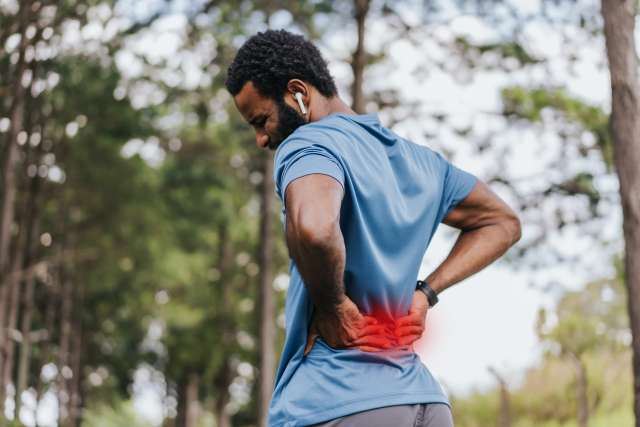Back pain is an incredibly common issue. It’s estimated that it will affect more than 80% of people at some point in their adult lives.
The back is a complex structure with many parts that can sustain an injury. When you find yourself experiencing an aching back, the first step is to figure out what’s causing the pain.
The anatomy of the back
Your back does a lot of work to support your body and enable it to move freely in all directions. Doing that involves an intricate structure of bones, muscles, tendons, ligaments and discs.
In a healthy, pain-free back, all the elements are functioning well and working together. But an injury to any of the back’s structures can leave you in pain. The back includes:
- Vertebrae: This is the bony part of your spine that runs the entire length of your back.
- Spinal cord: This delicate string of nerves lives inside the vertebrae (which is there to protect it).
- Discs: There is a pillow-like disc in between each section of the vertebrae. Their job is to cushion the spine.
- Muscles: An interconnected series of muscles around your spine helps support it and allows you to move in all directions.
- Ligaments: Thick bands of tissue connect to the bones of the vertebrae and hold them in place.
- Tendons: Cord-like bands of tissue connect the muscles in your back to the bones of the spine.
Back muscle pain symptoms
A soft tissue injury — meaning a strain or sprain of a muscle, tendon or ligament — is a common cause of back pain. In fact, muscle strain is to blame for up to 85% of back pain in adults in the U.S.
These types of back injuries can be acute (meaning the pain comes on suddenly and doesn’t last long) or chronic (which means the pain lasts for three months or more). The symptoms may show up immediately after you do something that tweaks your back. Or the pain may come on gradually.
Symptoms of a strained or sprained back muscle, tendon or ligament include:
- Pain or stiffness in your back that limits your movement
- Low back pain that may radiate into your butt, but not down your legs
- Muscle spasms that can occur during activity or at rest
- Pain that typically improves after a couple of weeks
Herniated disc symptoms
You can herniate a disc from a sudden injury (from lifting, twisting, straining). Most often, a disc ruptures because it has already started to wear out from age and use. Once the disc has significant wear and tear, it can rupture more easily.
Symptoms of a herniated disc (also called a slipped or ruptured disc) differ depending on where the affected disc is located in the spine. Some common symptoms of a herniated disc pressing on nerves in the spine can include:
- Pain in the low back that radiates into the leg and even to the foot. It can include numbness, tingling or burning sensations.
- Pain in the neck that radiates down the arm and into the hands or fingers. The sensation may also cause numbness or tingling.
How to get relief from back pain
Whether you have sudden pain from an acute injury or a chronic aching back, you can take some steps at home to feel better.
At-home remedies for back pain can include:
- Alternating heat and cold at the site of the pain. An ice pack will help reduce pain and inflammation; heat will stimulate blood flow to the injury.
- Taking over-the-counter anti-inflammatory medication (such as ibuprofen)
- Massage
- Gentle movements and activity that doesn’t cause or increase your pain
When to see the doctor for back pain
If your back pain is severe or lasts for more than a few weeks, you should see your health care provider. Seek medical attention immediately if you experience:
- weakness or numbness in your legs
- significant swelling at the injury site
- pain that radiates down your legs or arms



